Snapdragons care guide: how to plant and grow antirrhinums
Learn how to grow snapdragons for a versatile way of adding summer color to your flower beds and patio pots
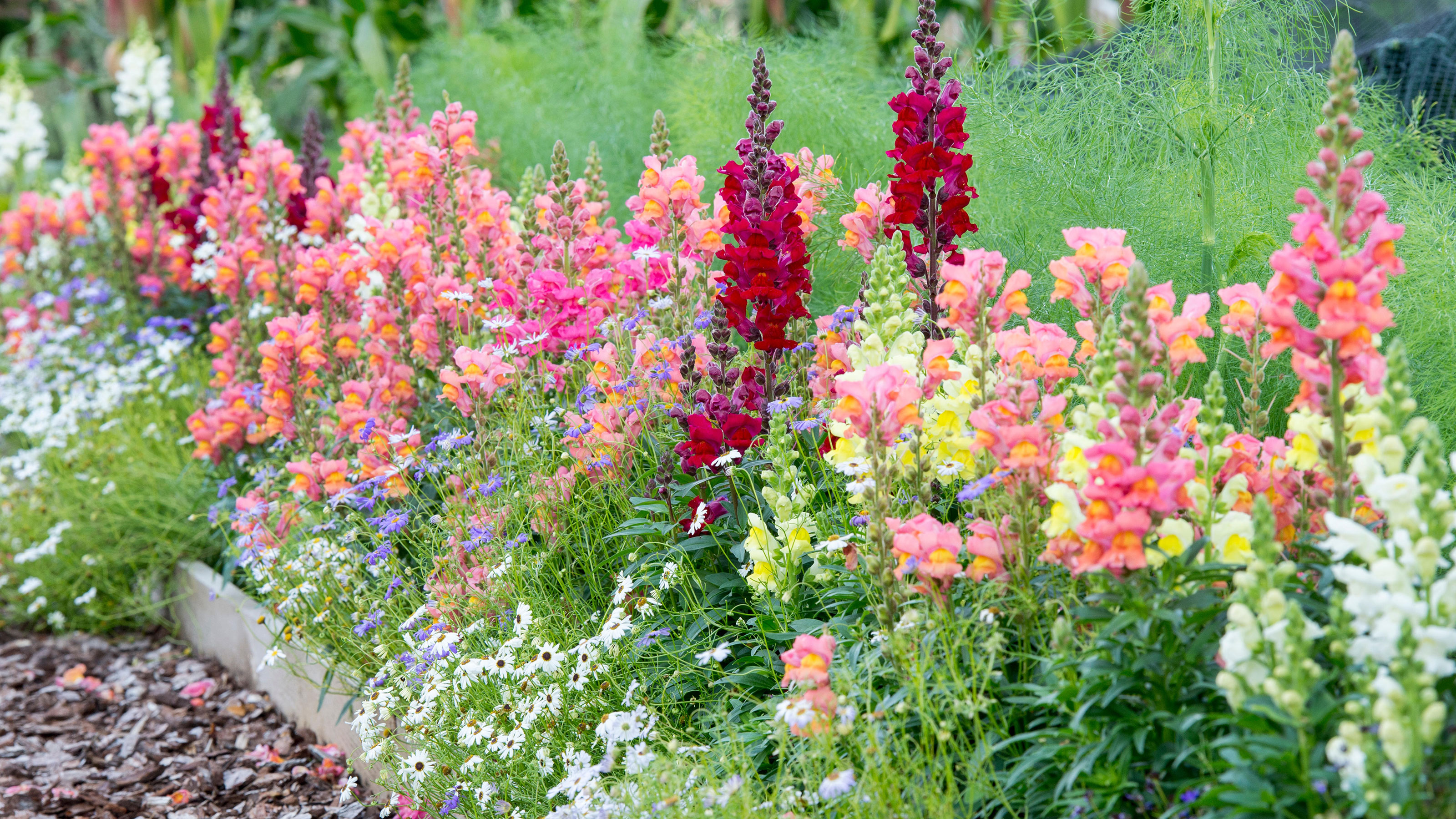

Snapdragons are short-lived perennial plants, usually grown each year from seeds. They are called snapdragons (snaps for short), or sometimes dragon flowers, because as you gently squeeze the sides of the two-lipped flowers, the face opens like a dragon opening its mouth.
They are also sometimes called 'bunny rabbit plants' because the flower is said to look like a rabbit’s head. Their scientific name is Antirrhinum.
The large and colorful two-lipped flowers open in late spring and summer and are carried on plants that vary from small, twiggy and bushy edging plants to tall and upright cut flowers. A few varieties have open, trumpet-shaped flowers, an increasing number are well scented, some have partially double flowers with extra petals and a few varieties also have crimson or variegated leaves.
Snapdragons come in a wide variety of colors, though not including blue, and are used in the garden in rock gardens and raised beds, hanging baskets and other containers, and as edging or the main display for flower bed ideas. Snapdragons are also grown as cut flowers either outside in the garden or, in the case of commercial cut flower producers, in greenhouses.
When the flowers are over, rounded seed pods develop that shed tiny seeds which often spring up around the parent plants and themselves develop into new plants.

Some snapdragon varieties such as 'Costa Mixed' are perfect for cutting
Where to use snapdragons in your garden
Snapdragons are classified as dwarf 6-12in (15-30cm), medium 15-30in (38-80cm) or tall 30-48in (80cm-1.2m). Different types have different uses.
Snapdragons are often grown for summer color in mixed garden borders, planted in groups between shrubs and perennials.
They are also grown as the main feature in summer bedding displays, temporary seasonal plantings that are removed at the end of the season. Medium-height varieties are set in groups in the middle of the border, dwarf bushy varieties are used as edging plants.
Varieties in single colors, rather than unpredictable mixed colors, are usually the most effective.
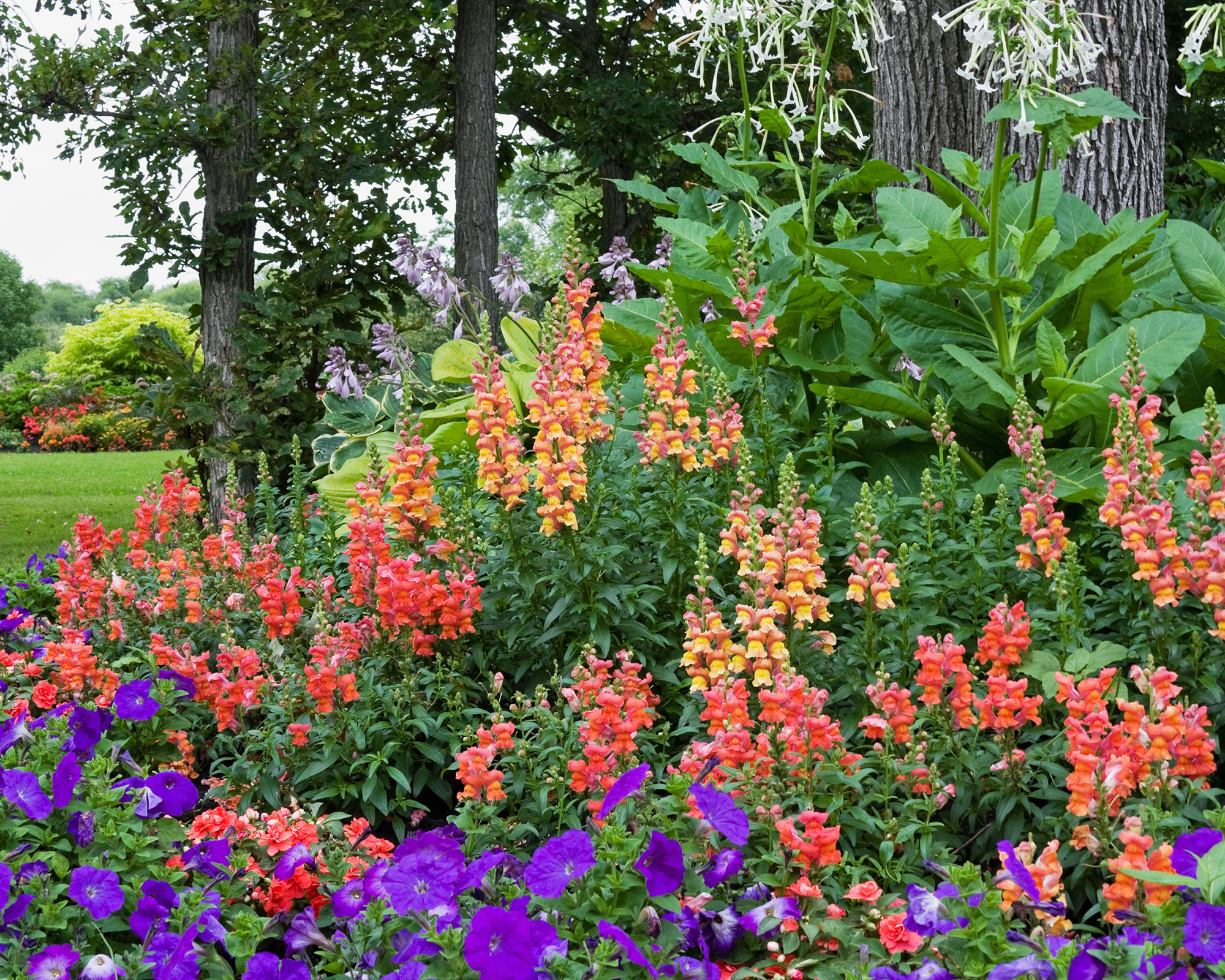
Antirrhinums are grouped according to height, behind an edging of shorter-growing petunias and impatiens
How to grow snapdragons from seed
Snapdragon seeds are about the size of poppy seeds and need light and warmth to germinate. When learning how to grow flowers from seeds, always check the guidance on the seed packet as some individual varieties may have their own requirements.
Sow the seeds in cell packs, three or four seeds in each cell, using clean trays and moist fresh seed sowing soil. Cover with a little soil – but only a little, as the seeds need light to germinate. Set them in good light and a temperature of about 60˚F (15˚C). A windowsill propagator is a good spot.
Keep the seedlings in good light as they develop, otherwise they will become spindly and collapse.
Snip off the weaker seedlings in each cell, leaving one strong one. Aim to plant them out soon after the last frost date in your area, but moving them to a cooler situation and hardening off plants before planting will help them become acclimatized to outdoor conditions.
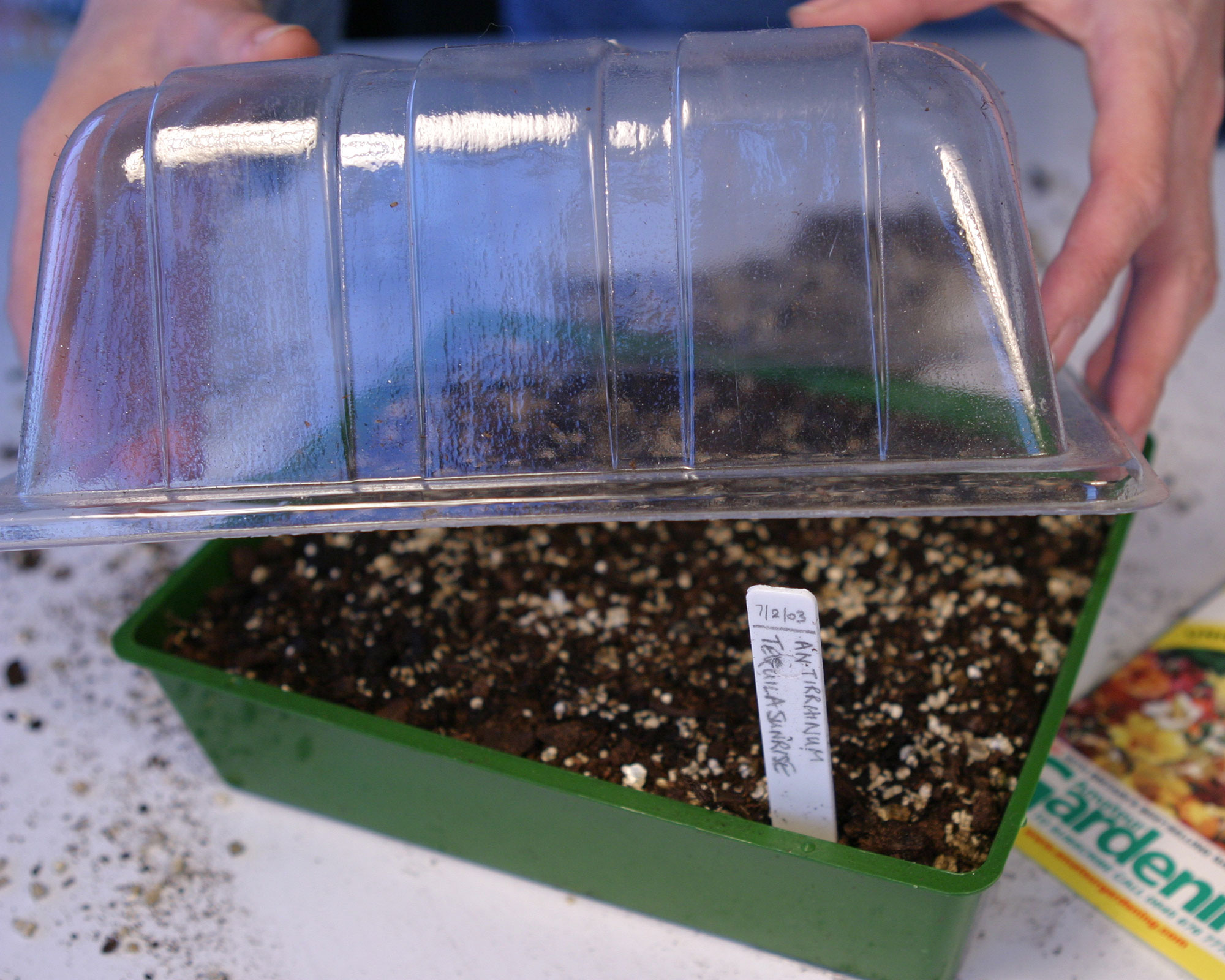
Seeds can be raised successfully in a covered windowsill propagator
When and where to plant snapdragons
Snapdragons are best planted in spring, immediately after the last frost in your area. Before planting them, be sure to acclimatize your developing home grown seedlings to the cool outdoor conditions.
Plenty of sunshine is important to ensure snapdragons thrive. They will often grow well when shaded from the side, in front of a garden fence for example, but shade from overhead trees causes weak and spindly growth.
Snapdragons appreciate good soil that is neither parched nor waterlogged, but are not usually fussy. Their planting site often benefits from additional organic matter being worked into the soil
Plant dwarf and bushy varieties as edging to flower beds and along garden paths, dwarf types are also ideal as part of your window box ideas and around the rim of larger containers.
Smaller, bushier varieties can be planted closer together than taller ones – the seed packet will provide advice.
Medium-height varieties work best in borders, or tall varieties if you are prepared to spend time supporting them effectively. ‘Liberty’ and ‘Sonnet’, reaching about 2ft (60cm), are the names to look for and come both in mixtures of shades and individual colors.
‘Night and Day’, with bronze leaves and bicolored crimson-and-white flowers, is very popular and ‘Madame Butterfly’ with open-throated, instead of two-lipped, flowers lasts longer than most in bloom.
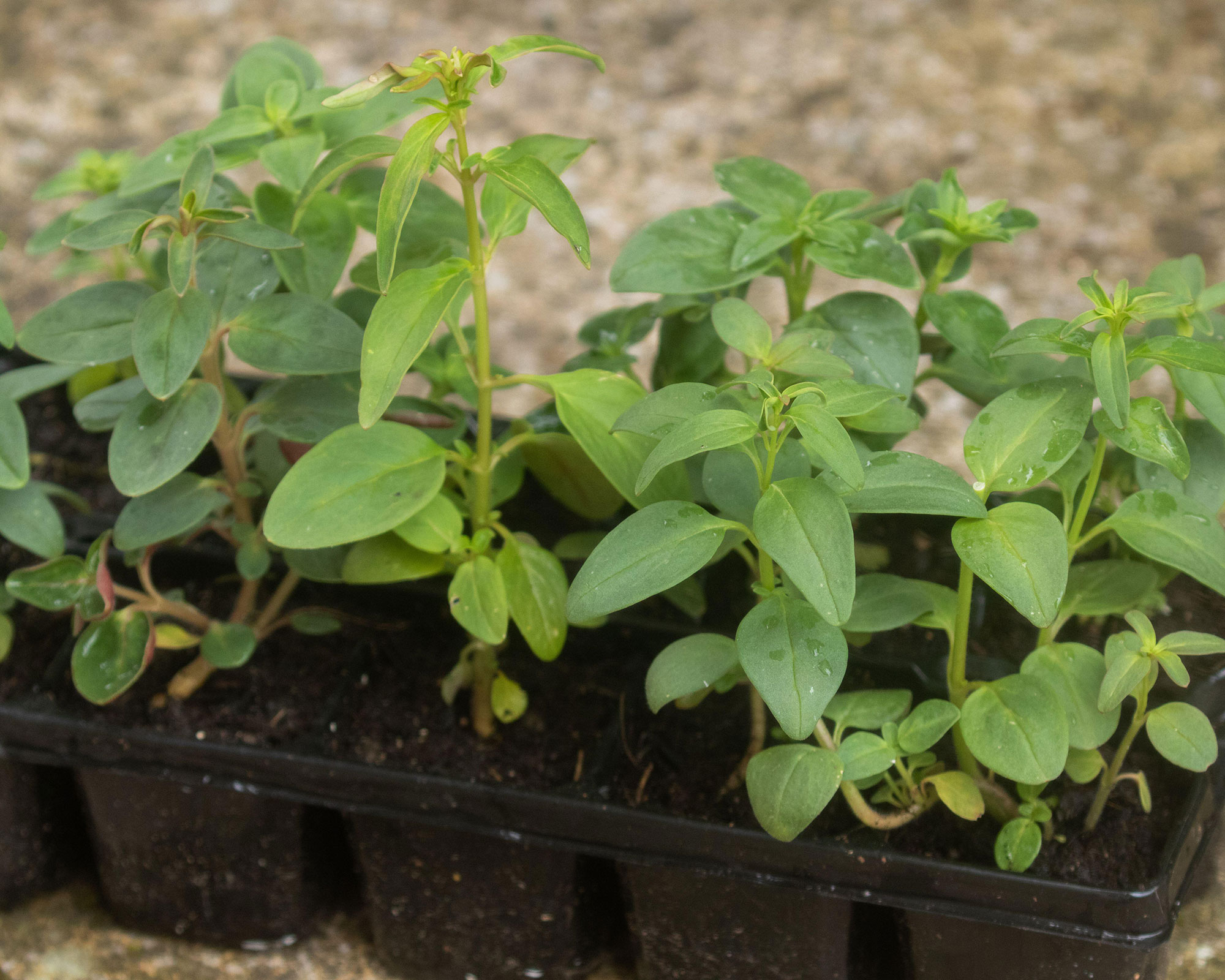
Harden off young plants before planting
How to plant snapdragons
- Check over the planting area. Remove any weeds and large stones, fork over the area carefully and add some soil improver if the area has been neglected or looks sticky or stony.
- Your seed packet, or the tag that came with the plants, will usually provide guidance on planting distance depending on the height and spread of the different varieties.
- Water the plants in their pots or plug trays, then remove the seedlings and space them out over the area to be planted. If you’re planting in more than one row, or in clumps, set the plants out so that they’re staggered.
- Plant with a trowel, water plants in with a weak liquid feed and watch your snapdragons grow.
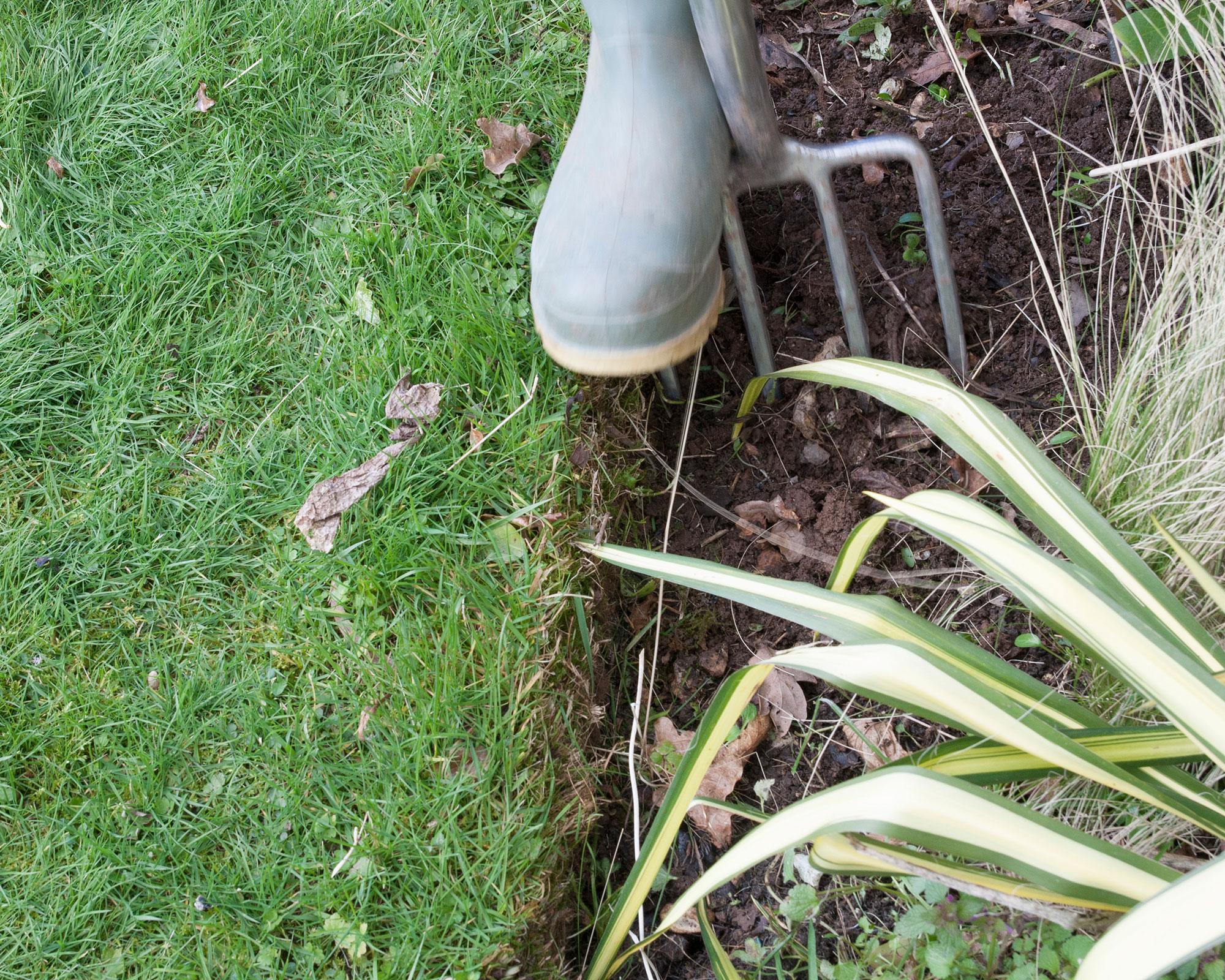
Fork over border soil so it is crumbly and weed-free before planting
Growing snapdragons in containers
If you want to include snapdragons in your container gardening ideas, medium-sized varieties are a good option for adding to the center of tubs and larger garden planters. Their striking upright growth makes a bold impact and, again, varieties in single colors are usually the most effective.
Plants in bright or pastel shades can be chosen according to your garden color scheme and the planting you have elsewhere in your plot.
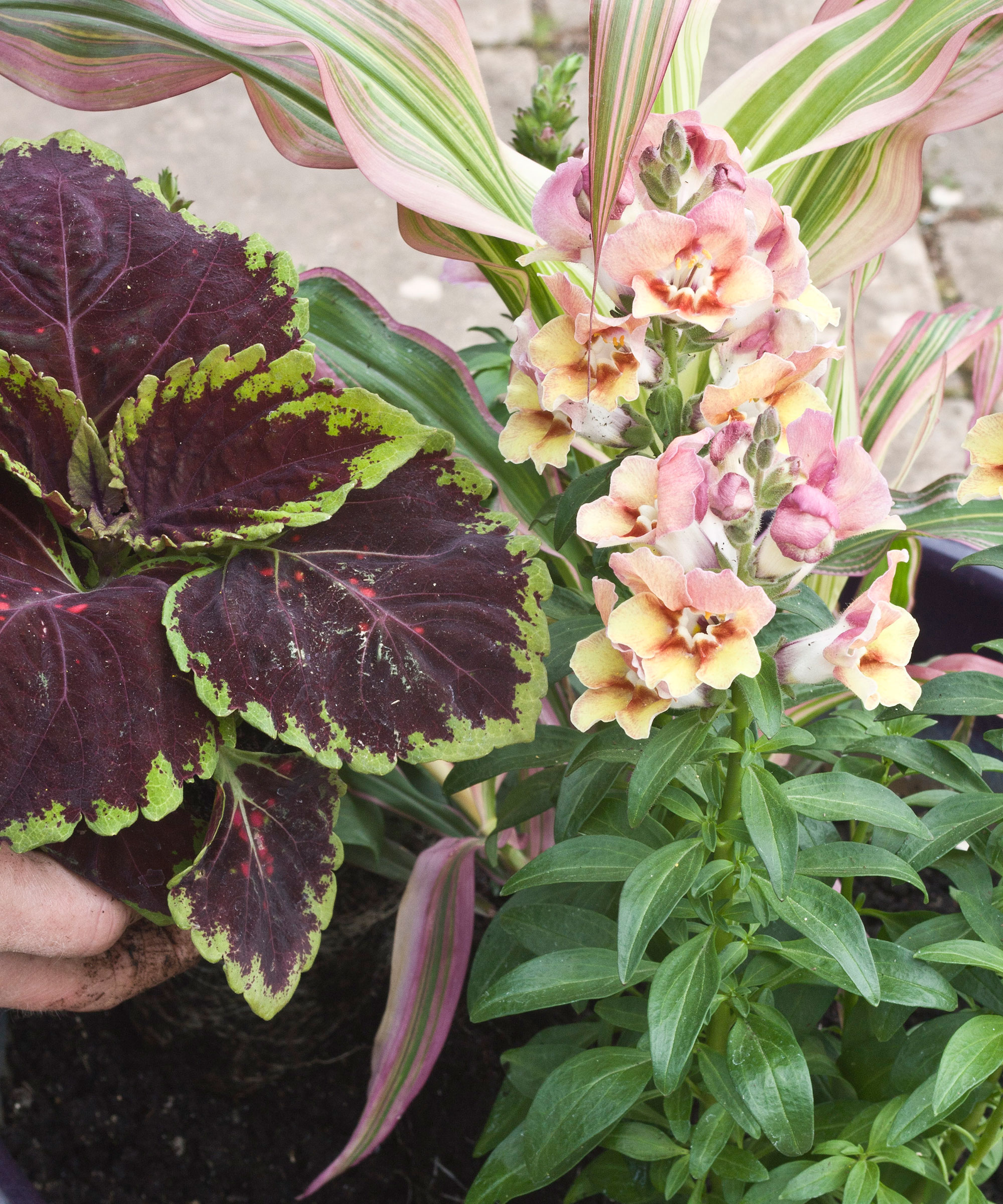
Snapdragons work well as the centerpiece of summer containers
Dwarf and trailing varieties are set around the edges of large containers or in window boxes. For snapdragons that tend to trail over the edge of containers, or which fill out window boxes, ‘Twinny’ provides a prolific, long season of flared flowers. If dwarf varieties with traditional snapdragon flowers are preferred, look for ‘Magic Lantern’, ‘Chinese Lanterns’, and in particular ‘Candelabra’, specially developed for hanging basket ideas.
Varieties for borders such as ‘Liberty’, ‘Sonnet’ and ‘Madame Butterfly’ also do well as container centerpieces.
A new variety, ‘Antirinca’, 14in (35cm), is a little shorter, ideal for smaller tubs, and has a strongly upright growth. The flared, open-throated flowers come in delightful bicolors.

Snapdragon 'Antirinca Bronze Apricot' works well in containers
Growing snapdragons as cut flowers
Snapdragons are popular cutting garden flowers, especially in pastel shades, and grow well in rows that brighten up the garden – until they are cut.
This is a case where planting tall varieties in mixed colors works well, providing a range of colors for different arrangements.
However, these tall growing varieties need thoughtful support to prevent wind damage, pea-and-bean netting stretched horizontally usually works better than canes.
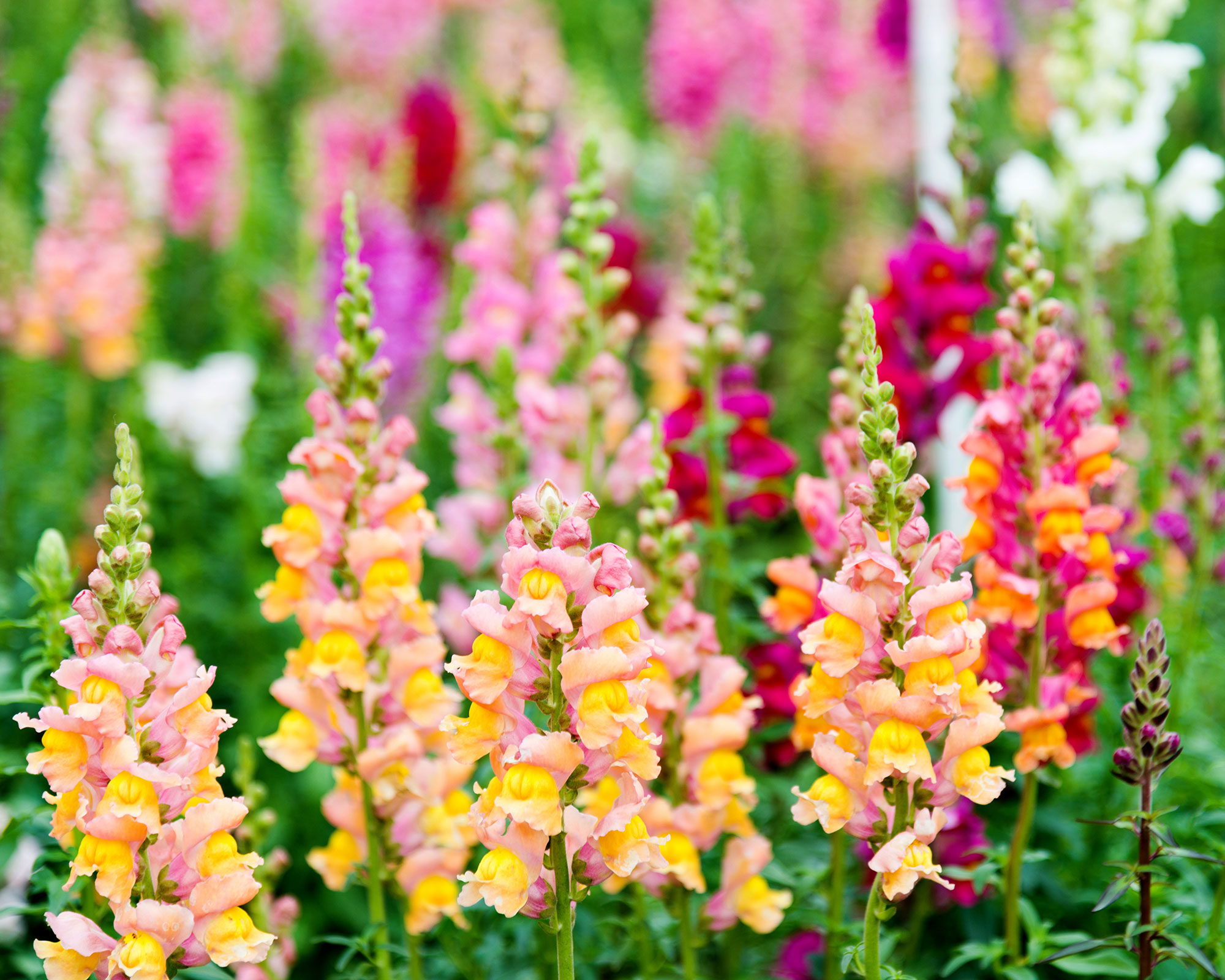
Keep tall flowering varieties of snapdragons well supported
Using snapdragons as edging plants
Snapdragons make lovely plants for garden edging ideas, but make sure you look for dwarf varieties. ‘Appeal’, ‘Floral Showers’ and ‘Magic Carpet’ come in a range of mixes and colors, reaching about 8in (20cm).
‘Twinny’, 12in (30cm), is a little different and combines dwarf and bushy growth with a long season of neat open-throated flowers.
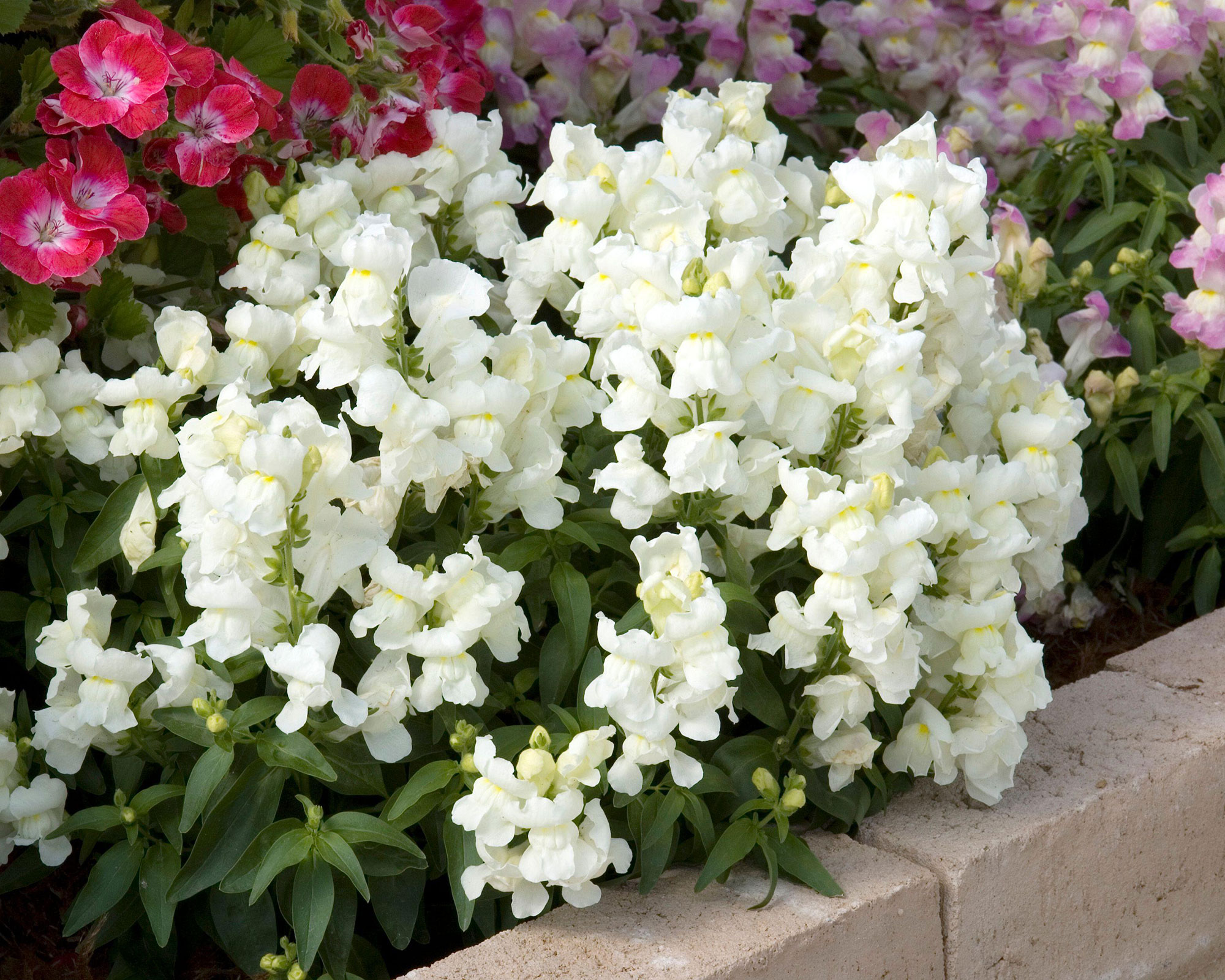
‘Floral Showers’ is a compact strain in white for edging borders and paths
How to care for snapdragons
- Check that your newly planted snapdragons do not dry out soon after planting, irrigate if necessary.
- Most modern varieties of snapdragon are naturally bushy and do not need pinching back after planting.
- Tall varieties will need support, use netting or canes and string to prevent them falling over. Get the support in place before the plants have collapsed.
- Look out for rust disease (see below) and deal with any infection promptly.
- Deadhead flowers by snipping off the spikes of faded flowers when the last flowers on the spike are dying.
- Be on the lookout for aphids (blackfly, greenfly) and squash them or spray with an organic insecticide at the first sight. There are more tips on how to get rid of aphids in our dedicated guide.
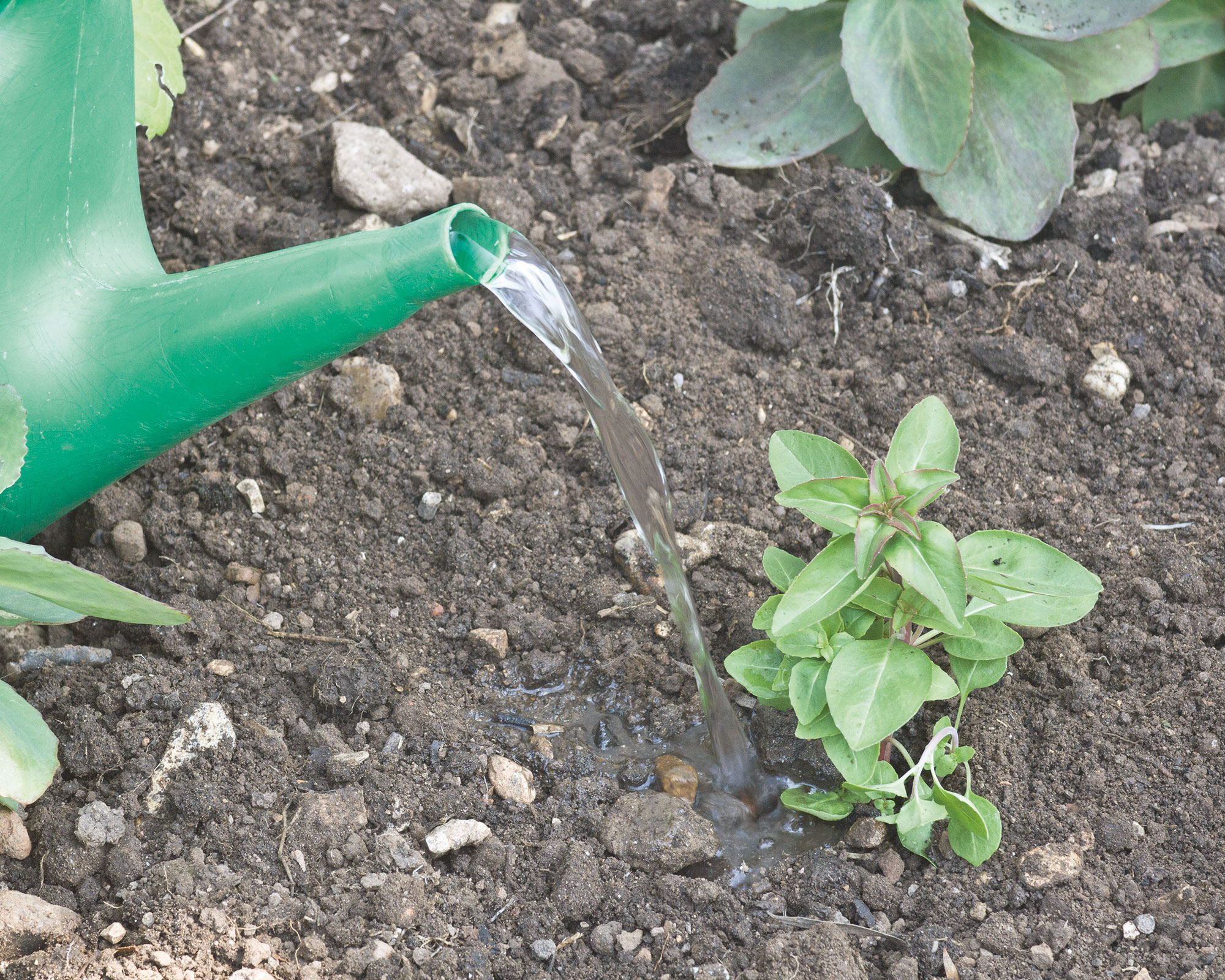
Water newly planted young plants during dry spells
Snapdragon problems and how to solve them
The big problem with snapdragons is rust disease. First seen as small, pale spots on the undersides of the leaves, the spots develop reddish tones and then turn rusty brown at the same time as yellow spots appear on the upper surfaces of the leaves. In severe cases, the leaves may turn completely brown and drop off.
Infections usually start on the lower leaves and may not be obvious at first. However, the problem can develop quickly in wet weather, so nip off any infected leaves and shoot tips as the symptoms first appear. As a last resort, use an appropriate fungicide.
In spring, rust infections usually spread from diseased plants that have remained in the garden from the previous year.
So, in fall, it’s wise to remove all the snapdragon plants from your garden. Also, rather than add them to your garden compost, burn them or add them to the green waste curb-side pickup.

Rust disease on the leaves of a snapdragon is a common problem
How to make more snapdragons
The dry brown seed pods on snapdragons will often shed seeds, if they are not deadheaded, and the seeds will spring up where they fall.
However, the seedlings are best removed as they often germinate in the autumn and carry rust disease into the following year.
A few varieties shed no seed and can be raised from cuttings – but this is not advisable as the threat of rust disease is ever present. The wisest approach is to raise new seedlings, or buy fresh plants, each spring.
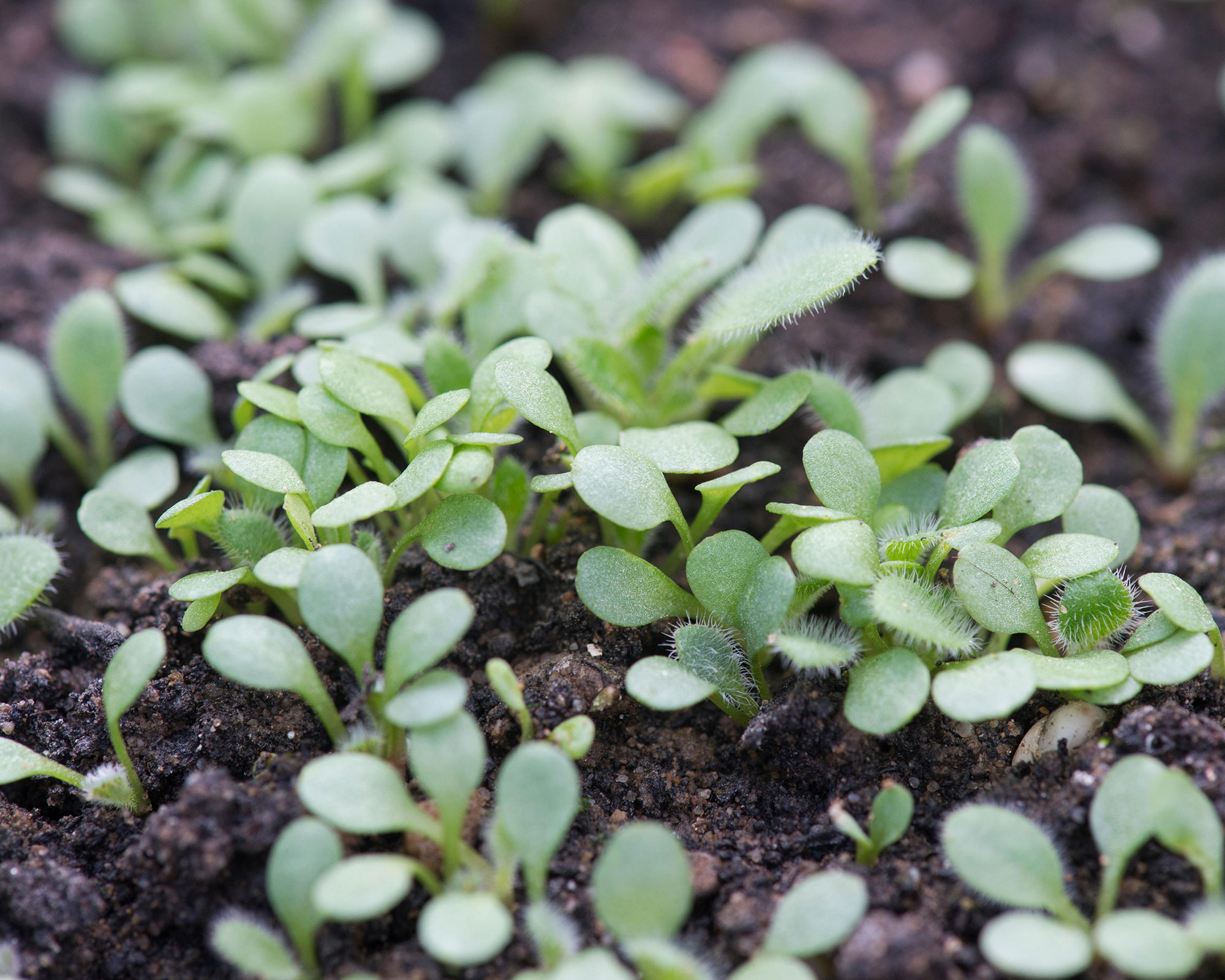
Raise your snapdragons from fresh seed each year
What are the best snapdragons to grow for cut flowers?
Varieties suited to borders are good for cutting but, if you are really serious about growing snaps for cutting, try one of the special cut flower types.
Names to look for include ‘Opus’, ‘Potomac’ and ‘Rocket’, with traditional flowers, plus ‘Chantilly’, with flared flowers and ‘Madame Butterfly’, with semi-double flowers.
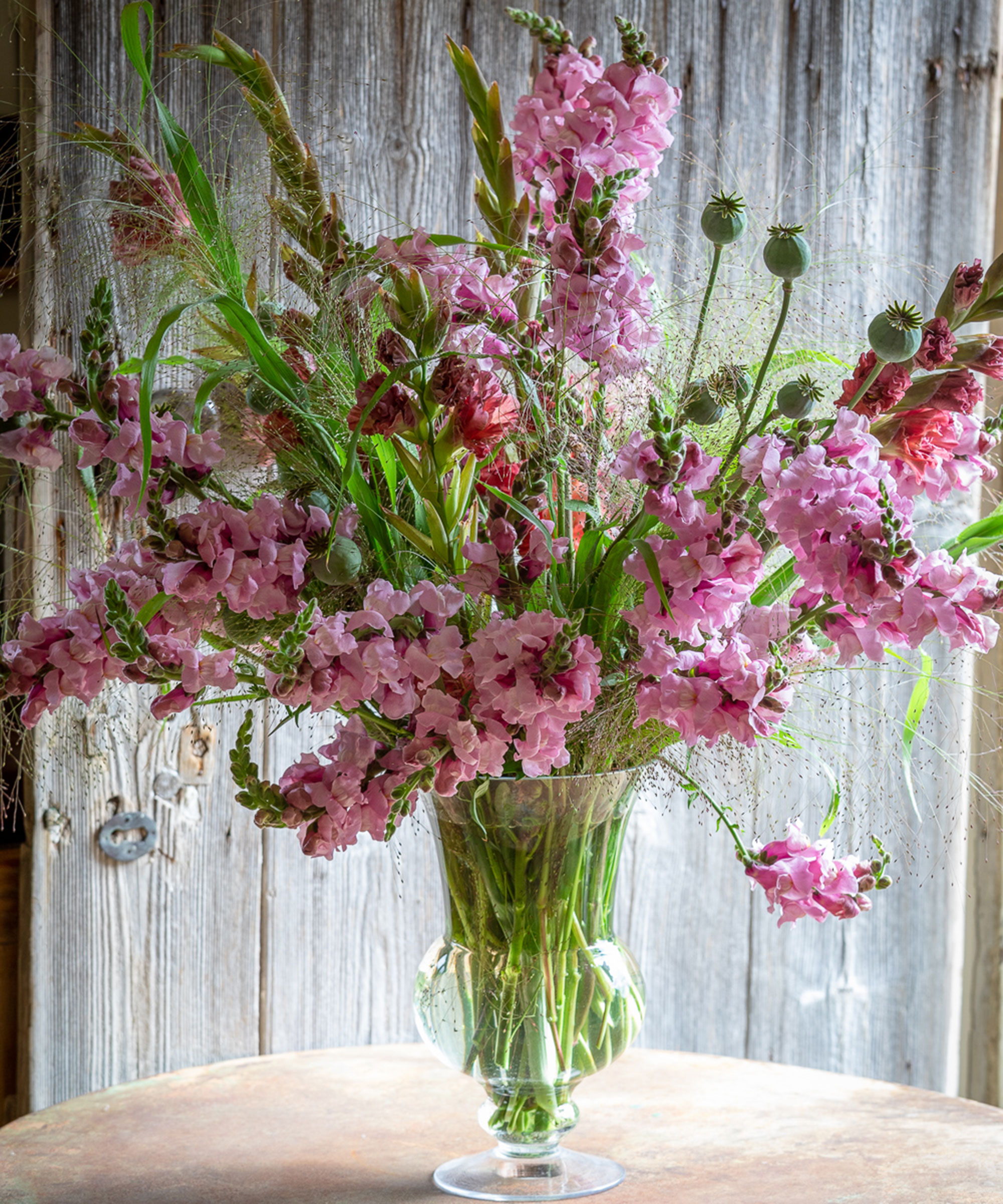
'Potomac Lavender' is perfect as a cut flower – seeds available from Sarah Raven
Are snapdragons annuals that I have to start afresh each year, or perennials that last for years?
They are both. Naturally, snapdragons are dwarf shrubs and can thrive for a number of years in the right situation.
However, most of the snaps we grow today have been developed to be grown from seed (or cuttings) in the spring and to flower prolifically all summer. They are then discarded at the end of the season.
The problem is that they may not survive the winter, if they do they tend to develop floppy growth in the second year and fail to flower prolifically. Overwintered plants also carry rust disease into the new season.
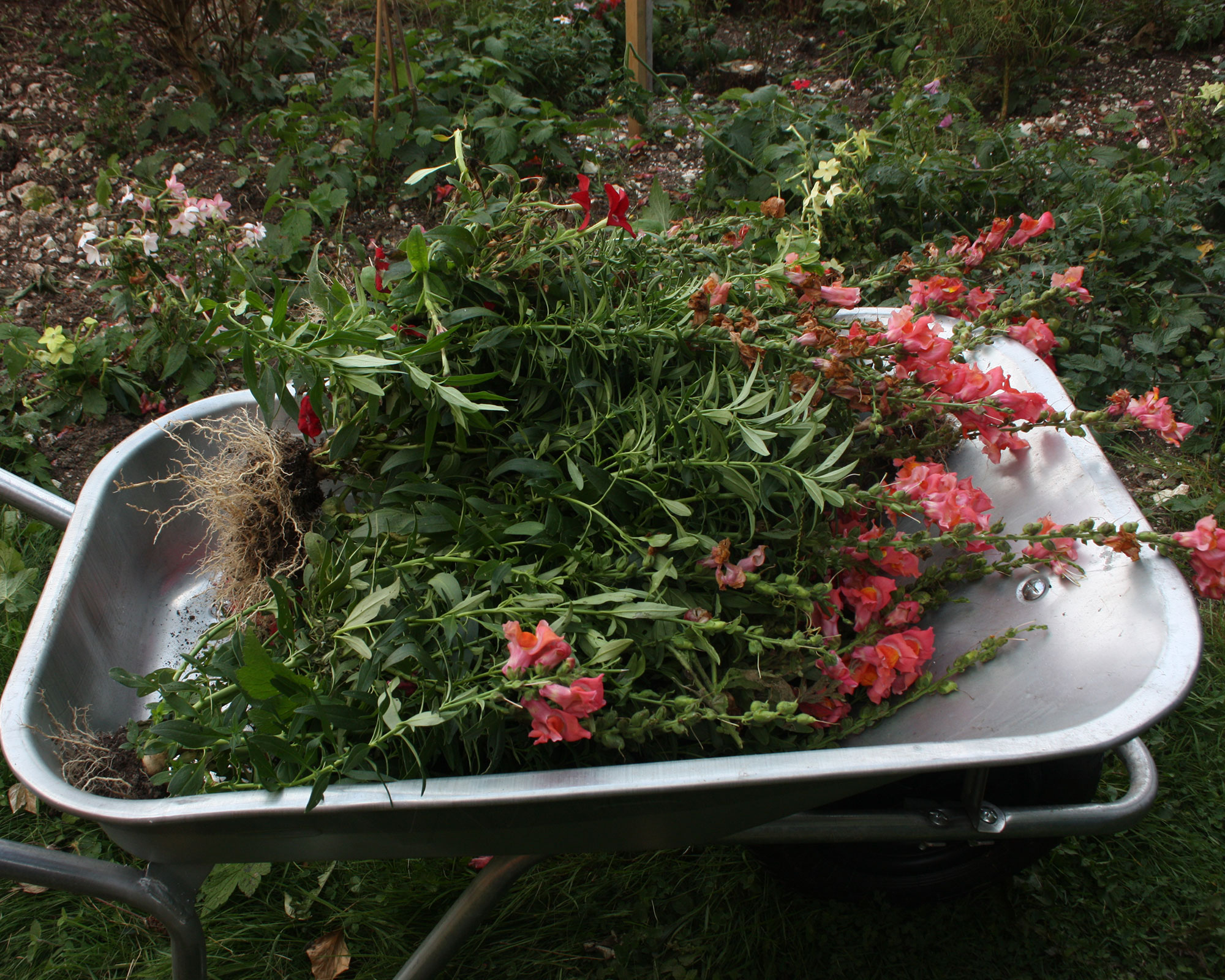
Antirrhinums are best cleared away at the end of summer
Can I collect the seeds from my snapdragons and grow more?
Yes, you can snip off the seed heads at the end of summer and shake the seeds into a large envelope to collect them.
They can then be sown in the same way as bought seeds. The results, however, can be unpredictable in terms of the height and flower color of the resulting plants, so when planning your garden border planting ideas it might be best to start with new seeds or plug plants each year to guarantee better results.
I cut some snapdragons to arrange in a vase, but the stems are crooked. How can I straighten them?
Once bent, snapdragon stems cannot be straightened! Bent stems occur when you cut snapdragons from your garden and then lay them down flat while you cut some more.
The tips of the flower spikes quickly turn upwards towards the light creating a bend in the stems.
The answer is, as soon as you’ve cut them, to stand your snapdragon stems upright in a bucket of water. The stems will then stay straight.
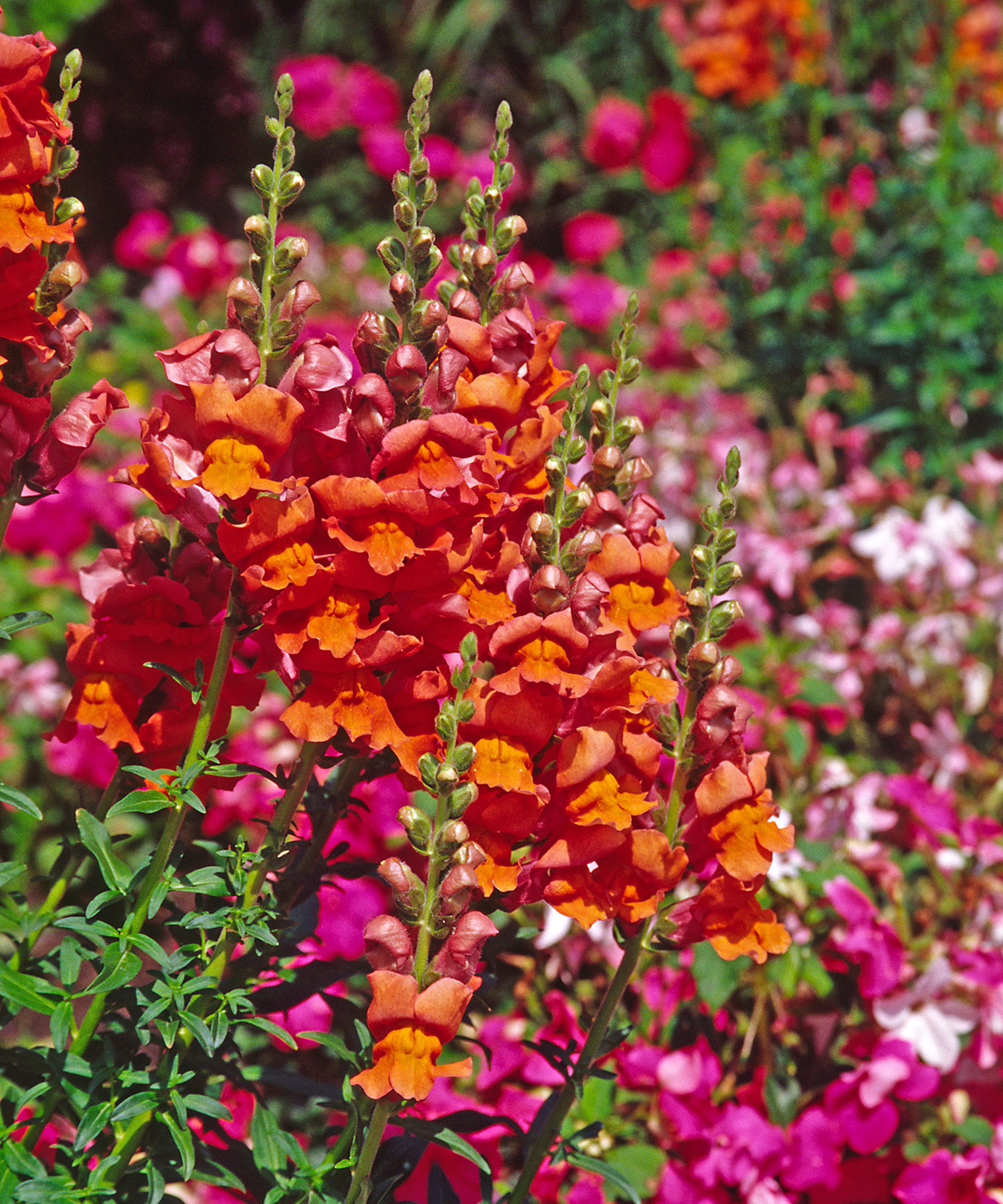
‘Rocket’ makes a lovely cut flower - pop stems into a bucket as you pick
What USDA zones do snapdragons grow in?
Snapdragons are best grown as summer annuals and will flower happily across the country. They may overwinter in zones 7-11 but overwintering encourages the spread of rust disease so is not advisable.
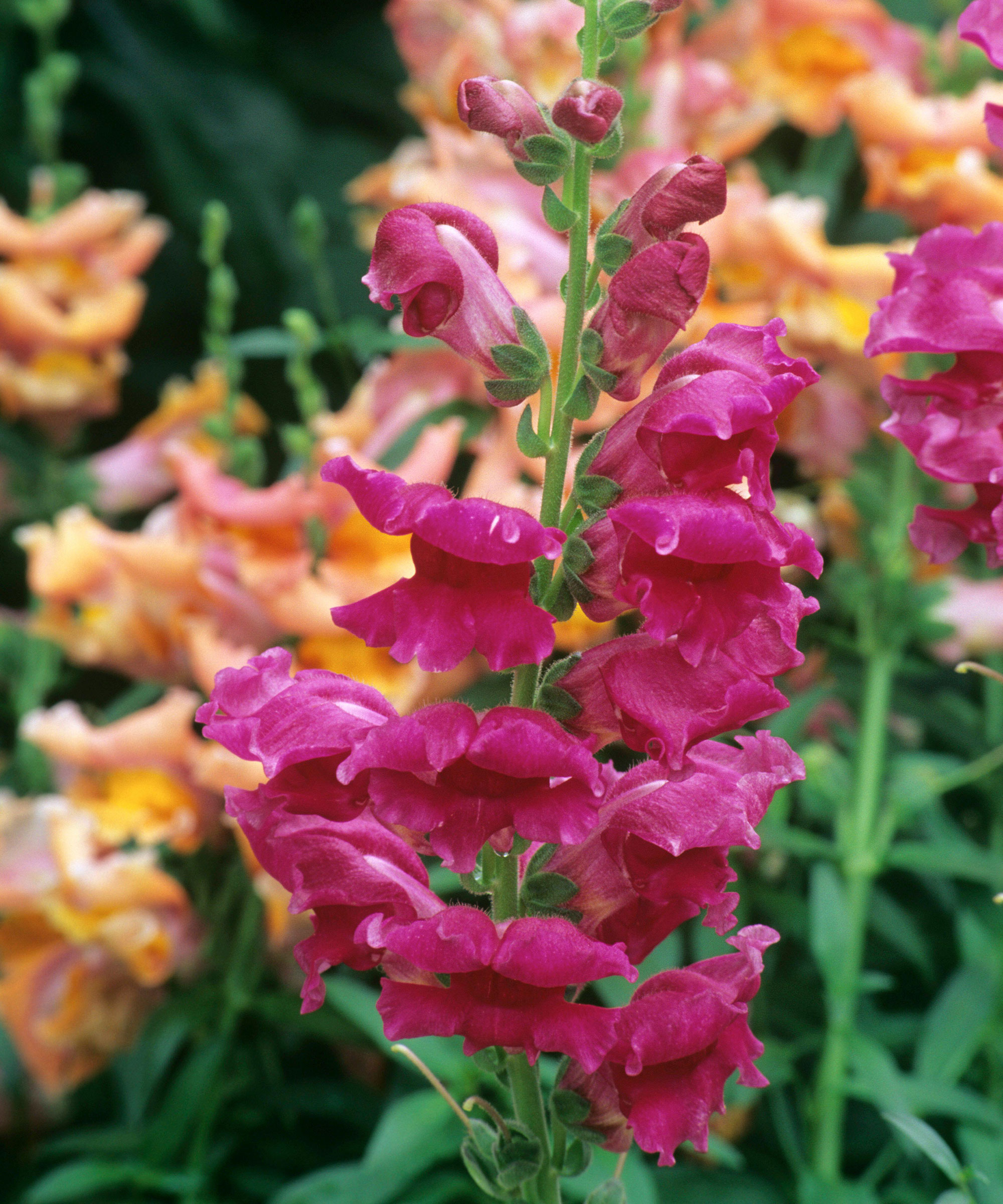
The snapdragon variety ‘Liberty Mixed’ reaches 2ft (60cm)
Are antirrhinums and snapdragons the same thing? And what is a false snapdragon?
Snapdragon is the common name for these plants, Antirrhinum is their scientific name.
False snapdragon is a very similar plant but with far more, but smaller, flowers on more slender stems. Its scientific name is Linaria.
Where to buy snapdragons
Most snapdragons are raised from seeds, available in gardening outlets and by mail order. Growing from seed is your best option if you're searching for cheap garden ideas as it's an economic way of propagation and you usually get a wider rage of varieties than when you buy plants.
Mail order suppliers have by far the widest range of varieties, in many colors and heights from 6in (15cm) to 4ft (1.2m), but the seeds need starting off in cozy indoor conditions to grow well.
Snapdragons are also sold as plants. Some plants are grown in nurseries from seed, but far fewer different types are sold as seed-raised plants compared with buying the seed and growing them yourself.
Some are special varieties, usually for containers, that are raised from cuttings and these can often be the most prolific and the best choice if you're a fan of fragrant plants.

Growing snapdragons from seed offers a greater choice of varieties
Where to buy snapdragons in the US:
- Shop snapdragons at Amazon
- Shop snapdragons at Burpee
- Shop snapdragons at Johnnys Selected Seeds
- Shop snapdragons at Stokes Seeds
- Shop snapdragons at Swallowtail Garden Seeds
- Shop snapdragons at Walmart
Where to buy snapdragons in the UK:

Graham Rice is a garden writer who has won awards for his work online, and in books and magazines, on both sides of the Atlantic. He is a member of a number of Royal Horticultural Society committees and the recipient of the 2021 Garden Media Guild Lifetime Achievement Award.
